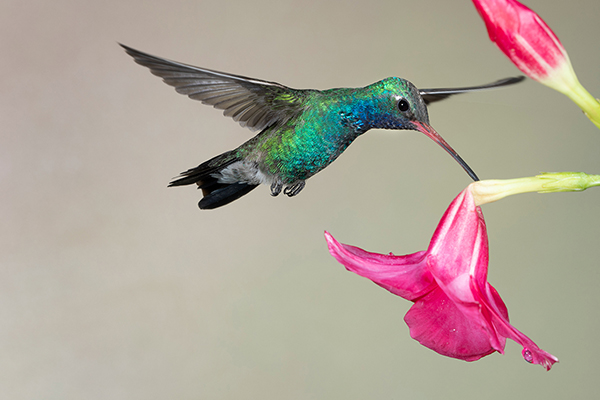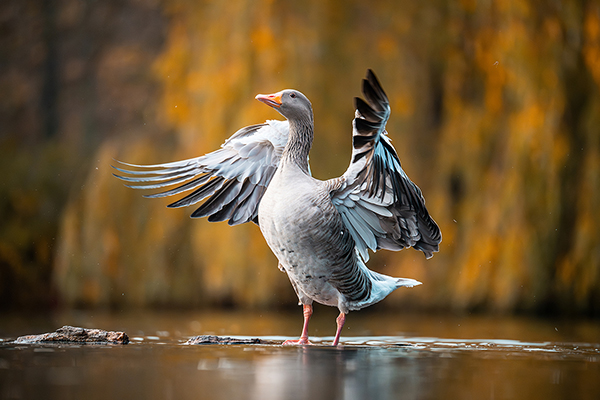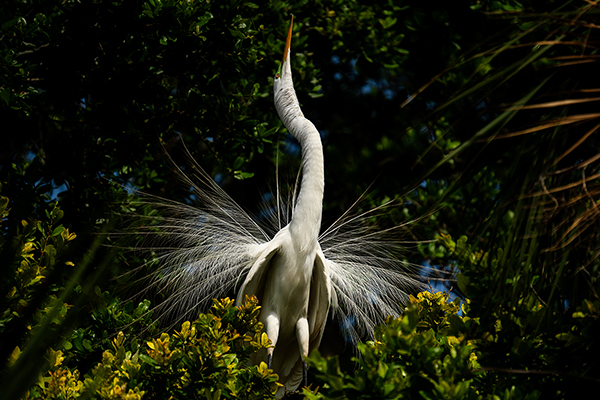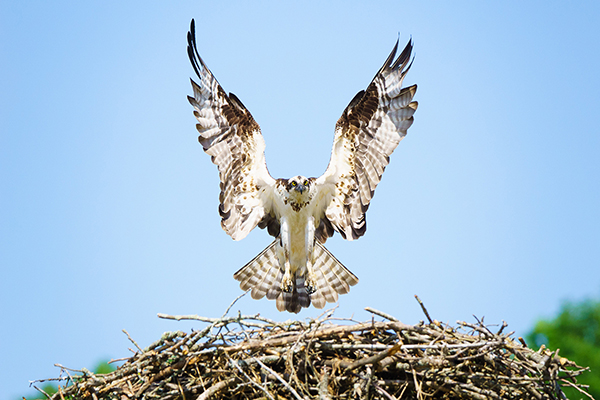Tamron Blogs
Share the article:
More Photo Tips | Video Gallery | Photo Gallery | Enewsletter sign-up
How to Photograph Birds – A Beginner’s Guide to Photographing Birds in Flight
Photographing birds in flight is both exhilarating and challenging for photographers, as it requires capturing their fast and fleeting movement. Whether you're trying to depict the descent of a bird onto a lake, the swiftly moving wings of a hummingbird, or the flight of a bald eagle, mastering the art of bird photography demands skill and patience. In this beginner’s guide to bird photography, we will provide professional tips to help you elevate your bird photography from the moment your subject takes flight.

Click image to view larger
Choosing the Right Camera Lens for Bird Photography
Acquiring an ultra-telephoto camera lens is crucial for capturing birds in flight. It's recommended to use a lens with a focal length of 400mm or more, such as Tamron's 50-400mm or 150-500mm for mirrorless cameras, or the 150-600mm for DSLRs (you can use the manufacturer's adapter for your mirrorless camera). If you own a crop-sensor camera, using a full-frame ultra-telephoto lens on it increases your effective telephoto range to bring your subject even closer for dynamic photographs.
Recommended Camera Lenses
1. TAMRON 150-500mm F/5-6.7 Di III VC VXD for Sony E, Fujifilm X and Nikon Z mirrorless cameras. This lightweight and compact ultra-telephoto lens reaches 500mm making it a great choice for capturing images of birds in flight. At just 8.4 inches and weighing in at under 66.3 oz, the lens is easy to use with a gimbal tripod head. The 150-500 features Tamron’s VXD linear autofocus motor to ensure fast and precise autofocus, even when panning. It also features VC (Vibration Compensation) that suppresses camera shake when shooting handheld or in low-light situations. The VC compensates for panning movement when the panning mode is selected. Note, if using the lens on a tripod or with a gimbal, turn off the VC. The lens provides high resolving power to capture the intricate details of a bird’s feathers, beak and more. This lens has weather sealing and a fluorine coating on the front element for easy cleaning and is compatible with Ø82mm filters.

Click iamge to view larger
2. TAMRON 50-400mm F/4.5-6.3 Di III VC VXD for Sony E-mount mirrorless cameras. This 8X ultra-telephoto zoom lens provides the perfect focal length for birds that are situated closer to you. Its standard-to-ultra-tele range lets you zoom out if larger birds fly closer to your position and zoom in as they move further away. Tamron’s VC image stabilization mechanism helps you take steady hand-held photos as VC suppresses camera shake that often occurs when shooting in the telephoto range, when panning, and under low-light conditions. The VXD autofocus system provides accurate tracking required for fast-moving subjects. This lens has weather sealing and a fluorine coating on the front element for easy cleaning and uses Ø67mm filters.

Click image to view larger
3. TAMRON SP 150-600mm F/5-6.3 Di VC USD G2 for Canon and Nikon DSLR cameras and with mirrorless cameras when using the manufacturer adapter. This ultra-telephoto 150-600mm lens provides superb optical performance and features a fast and precise USD (Ultrasonic Silent Drive) autofocus to capture fast motion. The 5-stop VC image stabilization has several modes, including a panning mode to follow flying birds. This lens has weather sealing and a fluorine coating on the front element for easy cleaning and uses Ø95mm filters.

Click image to view larger
Know the Habits of the Birds You Are Photographing
To create successful images of birds in flight, it is important to understand their behavior patterns and characteristics when learning how to photograph birds. Knowing things such as how your subject feeds, the triggers that prompt flight, and its usual flight patterns provides you with invaluable insights to predict its movements. Studying up on birds in general and your subject specifically will give you the ability to anticipate the activities of birds in flight, thereby positioning yourself to capture moments of action.

Click image to view larger
Basic Camera Settings for Photographing Birds in Flight
You can start with basic camera settings, and then adjust your settings as needed. Using Shutter Priority, set your camera to a speed of at least 1/2000 sec. Set your autofocus mode to continuous-follow focus tracking and metering to center point. Use a high burst mode. Set white balance to sunny conditions. If handholding your lens and camera, set your image stabilization to the panning mode. If using a stabilizing device such as a gimbal, tripod or other, turn off stabilization to avoid unwanted blur.
Capture Sharp Images Mid-Flight with High Shutter Speeds
To freeze the action of birds in flight, you must use a fast shutter speed of at least 1/2000 sec. Adjust your shutter speed higher or lower depending on the bird's movement and lighting conditions to ensure crisp, detailed shots. If your shutter speed goes below 1/1600 sec., increase your ISO to attain higher shutter speeds.

Click image to view larger
Try Panning to Create Dynamic Images
Panning when photographing birds in flight involves moving the camera and lens along with the bird's motion. This creates a feeling of speed in the image while keeping the bird in sharp focus. Begin tracking the bird before releasing the shutter, pressing the shutter release button down halfway to start the continuous autofocus. Follow its movement in a steady panning motion, keeping it in the center of the frame, and depress the shutter release button while in the burst mode. Continue panning even after taking the shot to ensure a smooth transition and avoid abrupt movements that can result in blurry images.
Adjust the Image Brightness Using Auto ISO
Auto ISO is advantageous in fluctuating lighting conditions. Turning on Auto ISO will allow your camera to automatically adjust your camera settings to get a fast shutter speed. In this case, switch to aperture priority and set your camera to the widest open aperture. Auto ISO will select the optimal shutter speed and ISO for you to get your shot.
Avoid Blowing Out the Whites
When photographing birds with contrasting colors, such as bald eagles, overexposure is a concern. Shooting on overcast days or areas with diffused sunlight will help to avoid blowing out the whites and give you a balanced exposure. When this is not possible, check your histogram often to see if you have overexposed the whites on your subject and adjust your exposure compensation as needed.
Practice. Practice. Practice.
Constant practice is key when learning how to photograph birds. Wait for those decisive moments, such as when a bird's wings are fully outstretched or backlit by the sun. Focus before the bird begins to land to capture a sharp image with wings and feet extended.
By incorporating the pro tips in this bird photography guide into your own bird photography, you'll soon be capturing stunning images of your favorite avian subject.
Related Articles
Want to learn more about photographing birds in flight? Check out these bird photography tutorials.
Download TAMRON Magazine Issue 8 with our cover story “Pro Tips for Bird Photography: Special Guide to Birds in Flight.”
Tamron Pro Tips for Capturing Birds in Flight
How to Photograph Birds in Flight
Bird Photography: Mr. Bluebird on His Shoulder with David Akoubian
The Accidental Birder with Roman Kurywczak
More Photo Tips | Watch Videos | Learn More About Tamron Lenses | Photo Gallery